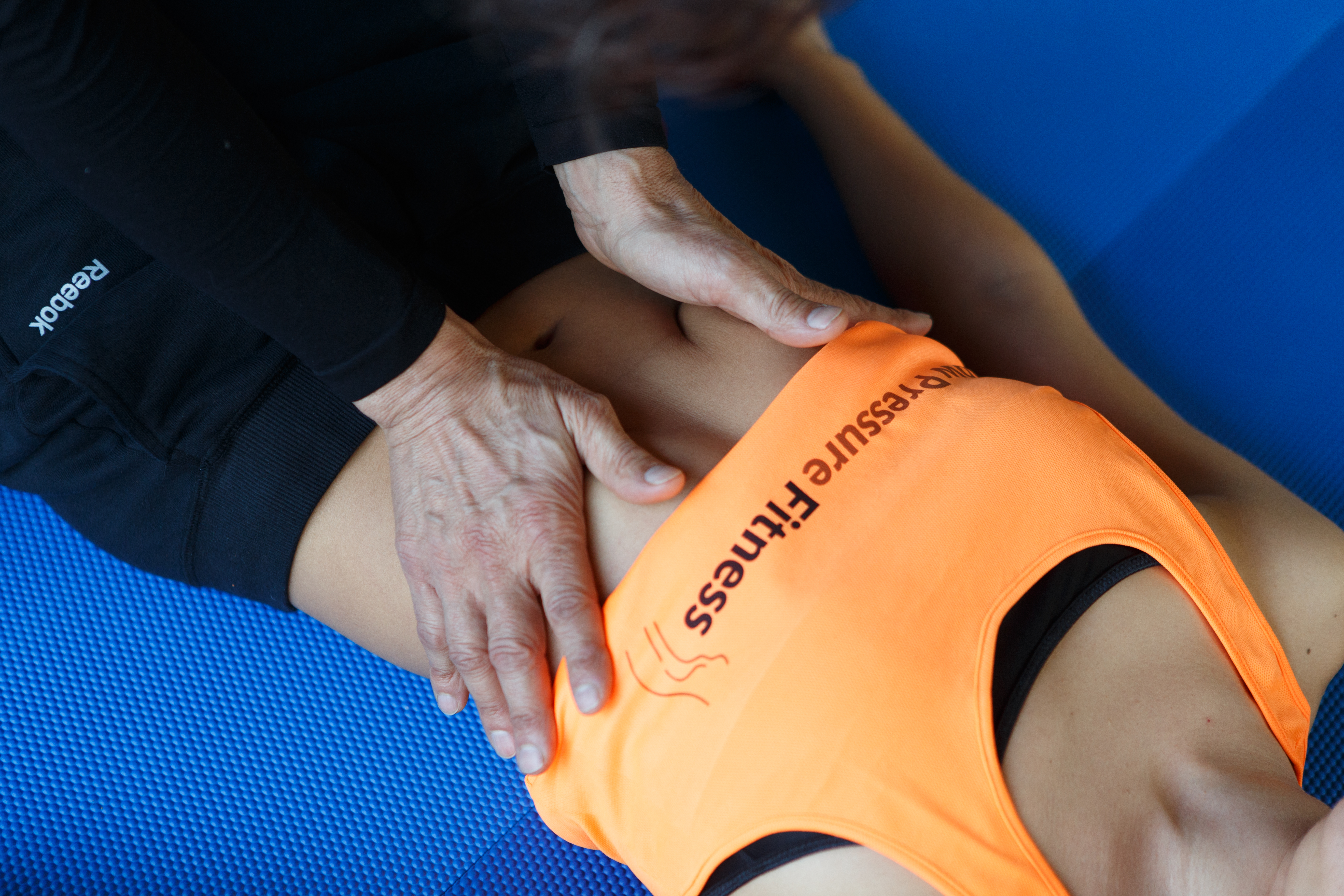Very recently the Journal of Bodywork and Movement Therapies (Ithamar et al., 2017) published an article about the effects of hypopressives on the electromyographic muscle activity of the pelvic floor and abdomen during hypopressive exercise. Hypopressives are commonly recommended by healthcare providers to rehabilitate different dysfunctions related with the core muscles. Back pain, pelvic floor or breathing pattern disorders are some examples that require specific rehabilitation of our core system. However, there is still a lack of evidence of the effects of hypopressive exercise on core muscle activity. This new study provides more knowledge about the physical effects of one of the most popular Low Pressure Fitness techniques: hypopressives.
This study involved thirty nulliparous women (average age 25.7 years) and assessed the electromyographic activity of the transverse abdominal, the obliques, the rectus abdominis and the pelvic floor musculature. Normalized surface electromyography was used to test the muscle activity during three different hypopressive positions: standing, supine and all on fours.

An increase in electromyographic activity was observed during the performance of all three postures for the transverse abdominal and the internal oblique. The transverse abdominal and internal oblique muscles had a greater increase in muscle recruitment activity during the standing posture compared to the supine and all on fours positions. This study also found a higher activation of the deep abdominal muscles (pelvic floor and the transverse abdominal) compared to the superficial core muscles such as the rectus abdominis. The synergistic relationship between the transverse abdominal and the pelvic floor has been highlighted in the scientific literature. The authors suggest that this muscle synergy could be used for the rehabilitation of pelvic floor dysfunctions such as pelvic pain or urinary incontinence. These findings indicate that hypopressives (also known as abdominal hypopressive gymnastics) are able to activate the abdominal and pelvic floor muscles.
It should be noted that the assessment in this study was carried out during the performance of three specific poses (standing, supine and all on fours). However muscle recruitment was not assessed at the beginning and at the end of a complete training session. Low Pressure Fitness training programs include the hypopressive technique in a continuous sequence of stretching positions and specific breathing patterns over a period of 15 to 20 minutes. In the future, it would be interesting to analyze variations in muscle recruitment during a full session (which is typically performed as part of a fitness or therapeutic hypopressive session).
Low Pressure Fitness is the leading international training school in the hypopressive technique. If you are a health or exercise practitioner check out our training calendar and become a Low Pressure Fitness certified trainer (LPF-CT).
Author:
Dr. Tamara Rial
